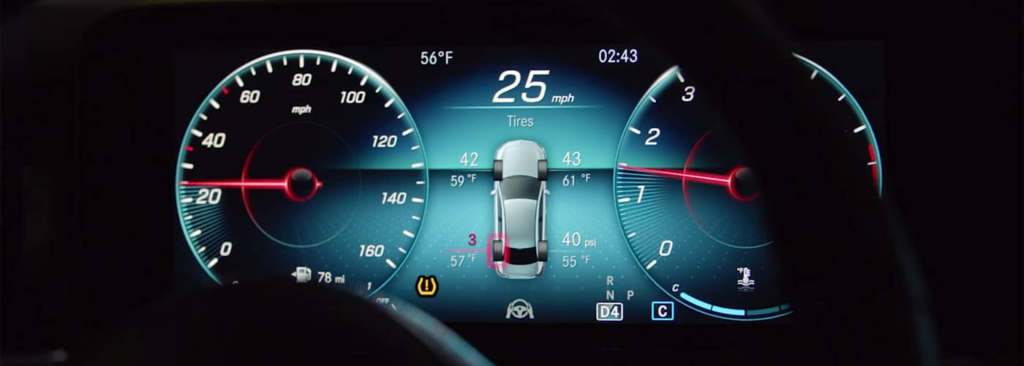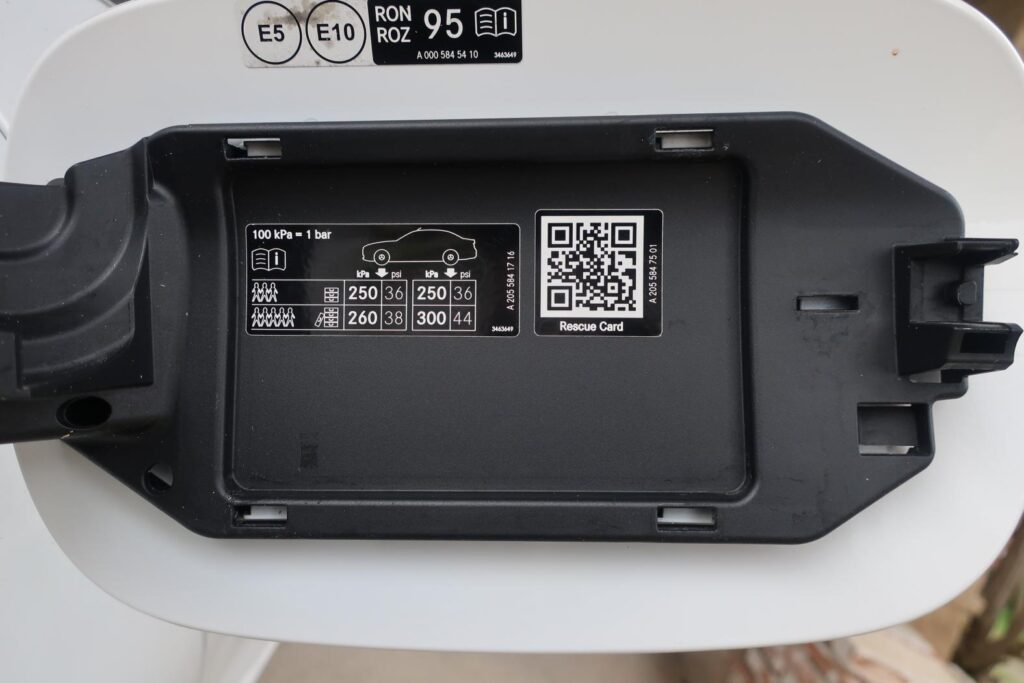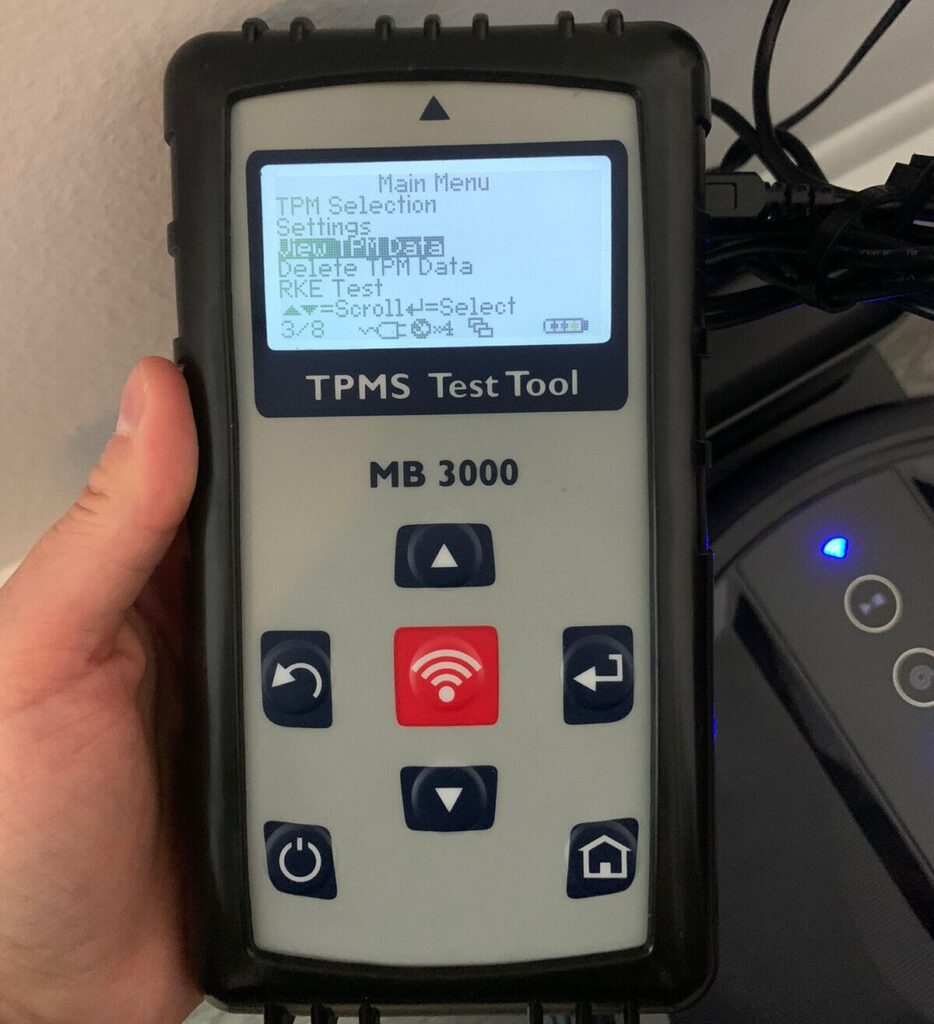Table of Contents
Tire pressure light
According to the National Highway Traffic Safety Administration (NHTSA), properly inflated tires can improve your gas mileage by up to 3%. Conversely, driving on under-inflated tires not only reduces fuel efficiency but also triples the risk of a tire-related crash. Ensuring your tires are properly inflated is a simple yet effective way to enhance vehicle safety and save money at the pump.
Maintaining the correct tire pressure is crucial for your vehicle’s performance and safety. Regularly checking your tire pressure can prevent a range of issues that compromise your driving experience and put you at risk. Under-inflated tires not only reduce fuel efficiency but also increase the likelihood of tire failure.
According to the National Highway Traffic Safety Administration (NHTSA), properly inflated tires can improve gas mileage by up to 3%, translating to significant savings over time. Moreover, driving on under-inflated tires triples the risk of a tire-related crash, particularly dangerous at high speeds where control is paramount.
Don’t wait for the tire pressure light to alert you to a problem. Make it a habit to check your tire pressure at least once a month and before long trips. Use a reliable tire pressure gauge and follow the recommended pressure levels in your vehicle’s manual.
If you notice persistent issues or are unsure about your tire condition, consult a professional. Taking these simple steps ensures better handling, braking, and overall vehicle stability, keeping you and your passengers safe on the road.

What is the Tire Pressure Light?
The tire pressure light is a warning indicator on your vehicle’s dashboard that alerts you when the air pressure in one or more of your tires is significantly below the recommended level. This light is part of the Tire Pressure Monitoring System (TPMS), a safety feature mandated in many vehicles to help prevent accidents caused by under-inflated tires.
How Does the TPMS Work?
The TPMS can function in two ways:
1. Direct TPMS: Uses sensors inside each tire to monitor the exact pressure levels and sends this information to the vehicle’s onboard computer. When the pressure drops below a certain threshold, the tire pressure light illuminates.
2. Indirect TPMS: Utilizes the Anti-lock Braking System (ABS) wheel speed sensors to detect changes in wheel speed that indicate a tire is under-inflated. An under-inflated tire has a smaller diameter and therefore rotates faster than properly inflated tires.

Why Does the Tire Pressure Light Come On?
The tire pressure light can come on for several reasons:
- Natural Air Loss: Tires naturally lose small amounts of air over time, causing the pressure to drop.
- Temperature Changes: Colder weather can reduce tire pressure as air contracts, while warmer weather can cause pressure to increase.
- Punctures or Leaks: Sharp objects or wear and tear can create slow leaks or punctures in the tires.
- Faulty TPMS Sensor: Sometimes the issue might be with the sensor itself rather than the tire pressure.
Importance of Responding to the Tire Pressure Light
Ignoring the tire pressure light can lead to various issues:
- Safety Risks: Under-inflated tires can cause poor handling, longer braking distances, and increase the risk of blowouts.
- Fuel Efficiency: Low tire pressure can reduce fuel efficiency, costing you more money in the long run.
- Tire Wear: Driving with incorrect tire pressure can lead to uneven tire wear, shortening the lifespan of your tires.
When the tire pressure light comes on, it’s important to check your tire pressure as soon as possible and adjust it to the recommended levels. If the light persists after adjusting the pressure, consult a professional to ensure there are no underlying issues.
Causes of Low Tire Pressure
Understanding the causes of low tire pressure is crucial for maintaining your vehicle’s safety and performance. Here are the main factors that can lead to low tire pressure:

1. Natural Causes
Temperature Changes: One of the most common natural causes of low tire pressure is temperature fluctuation. Air contracts when it gets cold and expands when it gets hot. Therefore, tire pressure can drop significantly during cold weather. For every 10 degrees Fahrenheit drop in temperature, tire pressure can decrease by about 1-2 psi (pounds per square inch). This is why it’s important to check tire pressure regularly, especially during seasonal changes.
2. Tire Leaks
Punctures: Sharp objects like nails, glass, or metal fragments on the road can puncture tires, causing slow leaks. These punctures might not always be immediately noticeable but can lead to a gradual loss of air over time.
Valve Stem Issues: The valve stem, where you inflate the tire, can also be a source of air leaks. If the valve stem is damaged, corroded, or not properly installed, it can allow air to escape. Sometimes, even a loose or defective valve core can cause a slow leak.
3. Poor Maintenance
Lack of Regular Checks: Many drivers neglect regular tire maintenance, leading to undetected low tire pressure. Tires naturally lose air over time, even without a visible puncture. Without regular checks, this slow loss can accumulate and lead to under-inflated tires.
Ignoring Tire Condition: Over time, tires can develop cracks, worn tread, or other damage that can cause air to leak. Regular inspections for signs of wear and tear are crucial to maintaining proper tire pressure.
Importance of Regular Tire Checks and Maintenance
Regular tire checks and maintenance are essential for preventing low tire pressure and ensuring your vehicle operates safely and efficiently:
- Routine Inspections: Check your tire pressure at least once a month and before long trips. Use a reliable tire pressure gauge and follow the manufacturer’s recommended pressure levels, usually found in the owner’s manual or on a sticker inside the driver’s door.
- Monitor Weather Changes: Be particularly vigilant during temperature changes. Adjust tire pressure accordingly to compensate for air expansion or contraction.
- Inspect for Damage: Regularly inspect tires for punctures, cracks, or any signs of damage. Pay attention to the valve stems and replace them if they appear worn or damaged.
By understanding and addressing these causes of low tire pressure, you can maintain optimal tire performance, enhance vehicle safety, and extend the lifespan of your tires.
Risks of Driving with Low Tire Pressure
Driving with low tire pressure can have serious implications for both your safety and your vehicle’s performance. Here are the primary risks associated with under-inflated tires:
1. Safety Risks
Tire Blowouts: One of the most dangerous risks of driving with low tire pressure is the increased likelihood of a tire blowout. Under-inflated tires can overheat, especially at high speeds, leading to a sudden and catastrophic failure. Blowouts can cause loss of vehicle control, leading to serious accidents.

Poor Handling: Low tire pressure can negatively impact your vehicle’s handling, making it harder to steer, brake, and maneuver. This can be particularly hazardous in emergency situations where precise handling is crucial.
Extended Stopping Distance: Under-inflated tires can increase your vehicle’s stopping distance, making it harder to stop quickly in an emergency. This can significantly raise the risk of collisions.
2. Performance Issues
Reduced Fuel Efficiency: Driving on under-inflated tires increases rolling resistance, which means your engine has to work harder to move the vehicle. According to the U.S. Department of Energy, this can reduce fuel efficiency by up to 3%, costing you more money at the pump.
Increased Tire Wear: Low tire pressure causes uneven and accelerated tire wear. This not only shortens the lifespan of your tires but also compromises their performance. You may find yourself needing to replace your tires more frequently, which can be an unnecessary expense.

3. Economic Impact
Higher Fuel Costs: As mentioned, under-inflated tires can lead to reduced fuel efficiency. Over time, the extra fuel consumption adds up, increasing your overall fuel costs.
Frequent Tire Replacement: Tires that wear out prematurely due to low pressure need to be replaced more often. High-quality tires are a significant investment, and frequent replacements can become costly.
Potential for More Repairs: Low tire pressure can also cause damage to other vehicle components. For example, it can affect the suspension and alignment, leading to more frequent repairs and maintenance costs.
4. Environmental Impact
Increased Emissions: Reduced fuel efficiency not only costs you more money but also contributes to higher carbon emissions. Properly inflated tires help reduce your vehicle’s environmental footprint by improving fuel economy and lowering emissions.
How to Check and Adjust Tire Pressure ?
Maintaining the correct tire pressure is crucial for your vehicle’s safety, performance, and fuel efficiency. Here’s a step-by-step guide on how to check and adjust your tire pressure:
Tools Needed:
- Tire pressure gauge (digital or analog)
- Air compressor (available at most gas stations or for home use)
- Vehicle owner’s manual (for recommended pressure levels)
Step-by-Step Guide
1. Check Tire Pressure
Step 1: Gather Your Tools
- Ensure you have a reliable tire pressure gauge and access to an air compressor.

Step 2: Find the Recommended Tire Pressure
- Locate the recommended tire pressure for your vehicle. This information is usually found in the owner’s manual or on a sticker inside the driver’s side door jamb. Note that the recommended pressure is usually given in psi (pounds per square inch).

Step 3: Measure Tire Pressure When Cold
- Tire pressure should be checked when the tires are cold, preferably before driving, as driving heats up the tires and can give a false reading.
- Remove the valve cap from one tire.
- Press the tire pressure gauge firmly onto the valve stem and read the pressure. Digital gauges will give a clear reading, while with analog gauges, you need to look at the needle position.

Step 4: Record the Pressure
- Note the current pressure reading and compare it to the recommended pressure.
Step 5: Repeat for All Tires
- Check the pressure for all four tires, including the spare tire, as it can be a lifesaver in emergencies.
2. Adjust Tire Pressure
Step 6: Inflate the Tires
- If the tire pressure is below the recommended level, use an air compressor to add air.
- Attach the air compressor hose to the valve stem and fill the tire. It’s important to do this in short bursts, periodically checking the pressure with the gauge.
Step 7: Deflate if Necessary
- If the tire pressure is above the recommended level, release some air by pressing on the valve stem core with a small tool or the back of the tire pressure gauge. Recheck the pressure until it matches the recommended level.
Step 8: Replace Valve Caps
- Once the pressure is correctly adjusted, replace the valve caps to keep dirt and moisture out of the valve stem.
Step 9: Recheck and Adjust if Needed
- Double-check the pressure to ensure accuracy, as some air may have escaped during the process.






Leave a Reply